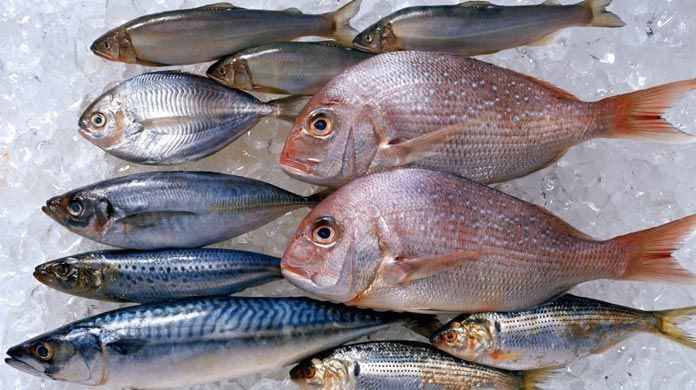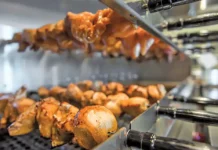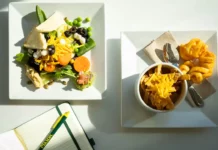
With global temperatures on the rise, preventing temperature abuse is more important than ever. I have several clients who have witnessed guests afflicted with scombroid poisoning right there in their dining room, during service.
Scombroid fish, especially those as common as Tuna and Mahi-mahi, can produce a nasty combination of substances known as scombrotoxin, which, when consumed, can lead to scombroid poisoning. Scombroid poisoning, in turn, sickens your guest almost immediately, results in lawsuits or insurance claims, and the Dept of Health will dispatch their foodborne illness inspectors to conduct a thorough audit of your restaurant.

How do we prevent scombroid poisoning? Let’s define its sources first:
Scombroid is a category of fish that includes Amberjack, Anchovy, Bluefish, Bonito, Escolar, Gemfish, Herring, Horse Mackerel (or Scad), Jack (including Blue Runner, Crevalle, Rainbow Runner, and Roosterfish), Kahawai, Mackerel, Mahi-mahi, Marlin, Menhaden, Pilchard (or Sardine), Sailfish, Sardine, Saury, Shad, Gizzard Shad, Hilsa Shad, Spearfish, Sprat (or Bristling), Trevally, Tuna, Wahoo, and Yellowtail.
One of the most dangerous aspects of scombrotoxin is histamine formation. Histamines are an elusive enemy, affecting some parts of the fish but seldom the whole. Histamine is known neither by sight, taste, or smell. (A laboratory can analyze histamine in fish by employing an alcoholic extraction & quantitation by fluorescence spectroscopy. Not exactly standard-issue kitchen equipment!)
Nothing can reverse scombrotoxin. Once formed, histamine is here to stay: you can’t cook it away; you can’t kill it by freezing it. If you or one of your guests has ever been hit by scombroid poisoning, you’re not likely to forget it: tingling or burning around the mouth & throat, followed by rash or hives, asthma-like constriction air passageway, a drop in blood pressure, headache, dizziness, itching… all right there at the table, all within a few minutes of consuming the fish. Later, there’s nausea, vomiting, diarrhea.
So what can you do to avoid such a ghastly scenario in your dining room? Because you can’t inactivate histamine formation in a fish that has scombrotoxin, the only thing you can do is prevent temperature abuse.
Some histamine-forming bacteria are facultative anaerobes, meaning they can grow inside vacuum-packaged seafood. Others are either ‘halotolerant’ or ‘halophilic’ (‘salt tolerant’ or ‘salt loving’, for those of us who aren’t up on our Greek). And since you can’t detect scombrotoxins in the first place, the only thing you can do is focus on keeping them from forming by preventing temperature abuse.
Prevention is easier than it sounds. Histamine formation results from temperature abuse to scombroids: when the fish becomes warm enough to spoil or decompose, then histamines can form. So what, exactly, is that temperature? Well, I don’t want to give you one temperature, since it really depends on a whole array of enzymatic & microbiological factors that we can’t see with the naked eye, and a lot of other stuff we simply can’t control, including how the fish was harvested, how long it was out of the water and at what temperature at harvest, whether it was headed and gutted immediately after death or much later, etc. All stuff that happens before the fish arrives in your kitchen.
One thing you can request is the Harvest Vessel Records from your seafood harvester, or records of the cold chain from your wholesaler; the FDA requires all wholesalers to follow Seafood HACCP. In addition to these records being required by law, they are also a wonderful form of assurance that your wholesaler is taking the appropriate steps to ensure a safe, high-quality product, which includes avoiding temperature abuse. Asking for the refrigeration records for the delivery truck is also another good way to ensure your seafood has been kept cold.
What impact can we have in our kitchen? There are many steps you can take to drastically reduce your risk of serving a seafood product that would result in scombroid poisoning. Here are a few:
- All fresh & vacuum-packaged seafood is received on ice, regardless of species.
- Your qualified foodworker checks for the telltale smells & signs of decomposition before signing for the fish (although you cannot smell histamine, you can detect nascent rot, and any seafood with off-smells should be rejected).
- a. Detecting bad odors in fresh fish is an effective means of determining whether the product has been subjected to abusive conditions.
- b. Using a metal stem thermometer, take the internal temperature of your fish; it must be less than 410F and should be closer to 320F.
- c. Smell something fishy? “When in doubt, send it back!” Empower your team to refuse product that doesn’t pass the sniff test and/or is above 410F.
- Seafood or fish is stored on ice, under refrigeration, until ready to be processed.
- Processing time is kept to a minimum: never allow your fish temp to rise above 700F, and return your seafood immediately to refrigeration after trimming, filleting, or portioning.
- Cook fish directly from refrigeration. (Cook-to temperature is 1450F internal).
If you are ever unfortunate enough to have a case of scombroid poisoning in your restaurant, take care of your guest immediately, including calling 911 and ensuring the guest is comfortable until qualified medical personnel arrives. Then freeze the suspect seafood for future testing by a qualified laboratory, call the Dept of Health to report the issue (yes, you are required to call DOH!) and make sure your insurance agent is in the loop.
References: Fish and Fishery Products Hazards and Controls Guidance, Fourth Edition; Modern Food Microbiology, Seventh Edition; FDA’s Bad Bug Book (Foodborne Pathogenic Microorganisms and Natural Toxins Handbook), Second Edition; Article 81 of the New York City Health Code.
To learn more about how you can avoid cooling violations at your next restaurant inspection, visit Bulletproof! Food Safety’s website.
























Comments are closed.